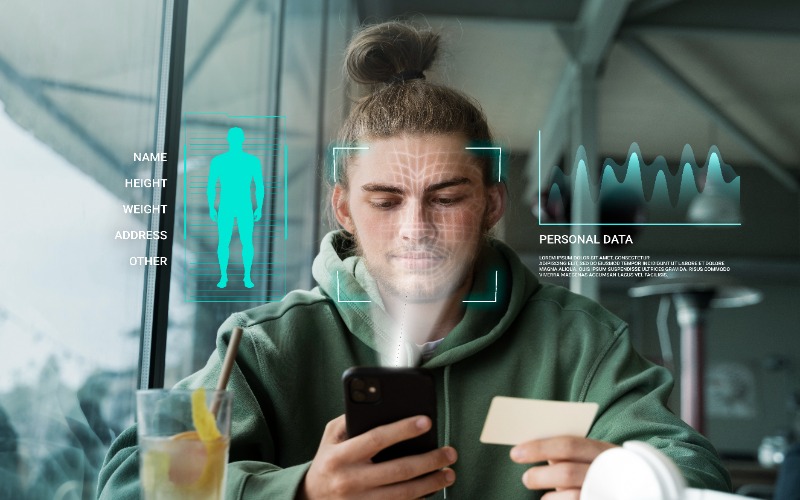Facial recognition technology has seamlessly integrated into various aspects of our daily routines over recent years. From unlocking smartphones to authenticating transactions for online banking, many individuals now regularly interact with facial authentication technologies.
Yet, the application of this technology extends far beyond these familiar uses, especially in the context of crowd management and enhancing security in public venues. Its adoption promises to streamline entry processes significantly and bolster security measures, solving many of the challenges of traditional entry.
Nonetheless, many venues are still hesitant to adopt such technology.
The Regulatory and Privacy Challenges of Biometrics
The idea of facial data potentially falling into the wrong hands is a significant worry. Concerns over biometric data privacy often block the wider adoption of the technology, especially against the backdrop of increasing cyber threats and data breaches.
To address this issue, it’s important first to demystify how facial recognition technology operates, particularly in environments like stadiums. First, upon registration, a fan’s facial features are initially processed into a biometric vector—a unique numerical code. At the venue entry, the system captures a current image, transforms it into a numerical code, and compares it with the stored code to verify identity.
Significantly, the system stores only the biometric vector, not the facial images themselves. These vectors are designed to be non-interchangeable between systems, greatly reducing the risk of data breaches or misuse, as they cannot be used to reconstruct an individual’s face. This approach aligns with strict privacy regulations, such as GDPR and the more recent AI Act in Europe, and the CCPA in the U.S.
Additionally, implementing facial recognition as an optional service can help address privacy concerns, offering fans who are hesitant about the technology the option to use traditional entry methods, thereby requiring continuous user consent and making the technology more accessible.
Managing potential privacy issues proactively is crucial for building trust, an essential factor for the technology’s acceptance, especially in contexts like stadium matches where enhancing the fan experience is paramount. By clearly communicating the privacy safeguards in place, providing options for opt-in, and ensuring robust security measures, venues can foster a more accepting environment for facial recognition technology.
Creating an Exclusive VIP Experience to Pilot Biometrics
For stadiums considering biometrics, implementing a pilot program could get to the root of these issues. This initiative would allow the technology to be tested amongst a select group of VIP members. It would also enhance their stadium experience by providing them with expedited access to their suites and additional exclusive benefits.
Implementing facial recognition technology allows fans to bypass traditional entry methods by enrolling in a program before they even reach the stadium. Upon arrival, a simple walk to a facial recognition kiosk confirms their identity in seconds, eliminating the need to rummage for physical
tickets or access a mobile ticket on an app. This streamlined, hands-free approach speeds up entry and provides a health benefit by minimizing physical contact.
Offering this expedited entry to VIP and loyal fans elevates their experience, making them feel truly valued. Additionally, surveys indicate a strong demand for such convenience, with 60% of families appreciating the idea of a ‘fast pass.’ At the same time, half of millennials are willing to pay extra for priority access to skip lines. This highlights the appeal of frictionless stadium access.
Beyond convenience, facial recognition enhances security. It verifies the identity of each attendee, ensuring that only genuine ticket holders gain entry and significantly reducing the possibility of ticket fraud. This technology offers a swift and precise method to account for attendees, adding a critical safety layer in emergencies. Thus, facial recognition streamlines access and fortifies stadium security, offering a dual advantage of efficiency and safety.
Strategies for Biometrics to Enhance Fan Journeys
A thoughtfully staged deployment of biometric technology is crucial to winning fan trust and paving the way to a wider rollout. Much like a preseason, initiating a trial phase acts as the groundwork. It allows system calibration through practical application, data gathering, and providing fans with a preview on a limited scale.
This initial phase is crucial for identifying and rectifying operational issues or privacy concerns early on. After a successful trial, the technology can be expanded across the stadium, informed by fan input and performance data.
A key part of this strategy is rigorous system testing in various stadium locations to ensure its resilience under diverse conditions. This includes varying lighting, crowd density, and demographic factors. This is analogous to a team preparing for a big tournament, ensuring the system can deliver consistent performance, even in challenging scenarios like adverse weather conditions or major events with large crowds.
After proving its effectiveness at entry points, facial recognition can enhance other aspects of the stadium experience. It could enable frictionless transactions at concession stands, quick age verification for alcohol purchases, and streamlined access for press members. These applications transform routine tasks into swift, effortless interactions, elevating the overall fan experience and engagement at the venue.
Facial recognition technology, through thoughtful implementation and a focus on privacy and convenience, has the potential to revolutionize stadium experiences, offering a seamless, secure, and personalized fan journey. By addressing privacy concerns head-on and demonstrating the technology’s benefits through pilot programs, venues can foster trust and acceptance among fans, setting a new standard for event access and engagement.










